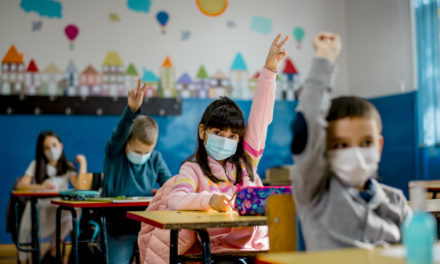Karlotta Hicks was ready to teach online. Her handmade Zoom background featured numbers and the ABCs, kindergarten concepts she hoped would jog her first graders’ memories after nearly six months away from the classroom. She’d spoken by phone over the summer to the parents of her 14 students, letting them know that virtual classes would begin right after Labor Day at 8 a.m.
“It’s going to be as if the kids were in front of me,” she said confidently a week before classes began at Winans Academy for Performing Arts.
When class began on Tuesday, just one student appeared in her virtual classroom, and his audio wasn’t working. Across the country, hundreds of thousands of students and teachers were troubleshooting their way through glitch-filled first days of online learning. This was going to be tough.
After a spring of incalculable loss, educators in Detroit are scrambling to get students back on track. As the pandemic continues to spin out of control, schools have been forced to choose — with little guidance — from a menu of bad options for resuming classes. Winans Academy, set in east Detroit neighborhoods that bore the brunt of the coronavirus pandemic, chose to begin the year entirely online.
This spring, as the virus snowballed in Detroit and the city’s unemployment rate spiked to historic levels, school fell by the wayside for many families. Fewer than half of the students checked in with their teachers in an average week.
“Parents told me, ‘on the scale of things I’m dealing with, school work is No. 5,’” Principal James Spruill said.
Many students at Winans had fallen behind even before the pandemic. The school’s growth scores, which measure student improvement on standardized tests, have remained stubbornly low despite repeated staff shake-ups and state interventions. Experts warn that the pandemic will likely make things worse at schools like Winans, where nearly every student is economically disadvantaged.
The stakes have never been higher for the latest reinvention effort at Winans Academy. After surveying teachers and staff, school leaders announced that classes would be held online until January at least.
Would virtual instruction — a new format for most school staff — allow students to catch up, or at least avoid more backsliding?
Would students even show up?
“Give me a thumbs up if you can hear me,” Hicks said to her lone student. He wore bright blue headphones printed with characters from the movie Toy Story 4. No thumbs up.
Eventually, his mother leaned over the tablet that the school had lent the family, and the audio crackled to life.
“Yay, it’s fixed, wonderful,” Hicks said. “Welcome to the first day of school.”
At 8:12 a.m. Hicks decided to stick with her game plan. She cued up a welcome song she’d found online. She sang along to the video: “Good morning, good morning, how are you?” The student smiled and mouthed some of the words, but the sound was choppy.
“Could you hear me singing when it glitched?” she asked.
“I didn’t hear you because of the glitching,” he said.
“You didn’t hear me, oh my goodness. I was singing, I was going all in!”
“Sorry.”
“No worries,” she said. But she decided to reschedule class for 12:15 p.m.
“I’m going to do the introduction with everyone,” she told the student’s mother. “I just need to call them to see where they are.”





